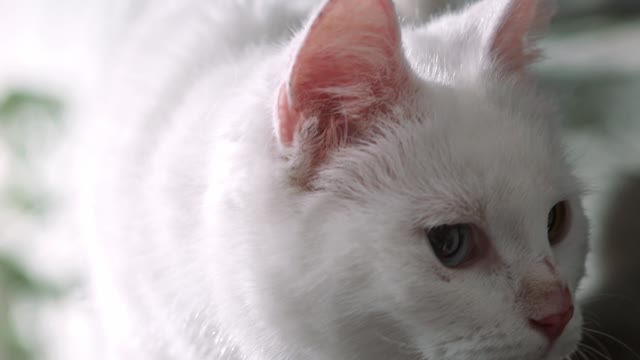Premium Only Content

Smart cat likes to play with Keyboard Organ
Fun Trivia About Your Feline Friend
These fun facts about cats will make you feel all fuzzy inside.
Facts About Cat Anatomy & Physiology
A house cat’s genome is 95.6 percent tiger, and they share many behaviors with their jungle ancestors, says Layla Morgan Wilde, a cat behavior expert and the founder of Cat Wisdom 101. These behaviors include scent marking by scratching, prey play, prey stalking, pouncing, chinning, and urine marking.
Cats are believed to be the only mammals who don’t taste sweetness.
Cats are nearsighted, but their peripheral vision and night vision are much better than that of humans.
Cats are supposed to have 18 toes (five toes on each front paw; four toes on each back paw).
Cats can jump up to six times their length.
Cats’ claws all curve downward, which means that they can’t climb down trees head-first. Instead, they have to back down the trunk.
Cats’ collarbones don’t connect to their other bones, as these bones are buried in their shoulder muscles.
Cats have 230 bones, while humans only have 206.
Cats have an extra organ that allows them to taste scents on the air, which is why your cat stares at you with her mouth open from time to time.
Cats have whiskers on the backs of their front legs, as well.
Cats have nearly twice the amount of neurons in their cerebral cortex as dogs.
Cats have the largest eyes relative to their head size of any mammal.
Cats make very little noise when they walk around. The thick, soft pads on their paws allow them to sneak up on their prey — or you!
Cats’ rough tongues can lick a bone clean of any shred of meat.
Cats use their long tails to balance themselves when they’re jumping or walking along narrow ledges.
Cats use their whiskers to “feel” the world around them in an effort to determine which small spaces they can fit into. A cat’s whiskers are generally about the same width as its body. (This is why you should never, EVER cut their whiskers.)
Cats walk like camels and giraffes: They move both of their right feet first, then move both of their left feet. No other animals walk this way.
Male cats are more likely to be left-pawed, while female cats are more likely to be right-pawed.
Though cats can notice the fast movements of their prey, it often seems to them that slow-moving objects are actually stagnant.
Some cats are ambidextrous, but 40 percent are either left- or right-pawed.
Some cats can swim.
There are cats who have more than 18 toes. These extra-digit felines are referred to as being “polydactyl.”
-
 2:05:07
2:05:07
Darkhorse Podcast
18 hours agoWhy Trump Wants Greenland: The 257th Evolutionary Lens with Bret Weinstein and Heather Heying
220K346 -
 8:50:58
8:50:58
Right Side Broadcasting Network
18 hours ago🎅 LIVE: Tracking Santa on Christmas Eve 2024 NORAD Santa Tracker 🎅
240K31 -
 2:48
2:48
Steven Crowder
20 hours agoCROWDER CLASSICS: What’s This? | Nightmare Before Kwanzaa (Nightmare Before Christmas Parody)
237K12 -
 33:49
33:49
Quite Frankly
17 hours agoThe Christmas Eve Midnight Telethon
47.1K6 -
 2:12:46
2:12:46
Price of Reason
16 hours agoAmber Heard BACKS Blake Lively Lawsuit Against Justin Baldoni! Is Disney CEO Bob Iger in TROUBLE?
15.8K7 -
 1:01:17
1:01:17
The StoneZONE with Roger Stone
11 hours agoChristmas Edition: Why the Panama Canal is Part of the America First Agenda | The StoneZONE
85.7K26 -
 DVR
DVR
LFA TV
22 hours agoLFA TV CHRISTMAS EVE REPLAY
110K14 -
 4:33:48
4:33:48
tacetmort3m
1 day ago🔴 LIVE - THE ZONE KEEPS PULLING ME BACK - STALKER 2 - PART 15
57.9K12 -
 22:45
22:45
Brewzle
18 hours agoI Went Drinking In A Real Bourbon Castle
40.6K4 -
 48:36
48:36
PMG
1 day ago $3.34 earned"Parkland Parent Speaks Out On Kamala Harris Using Victims"
32.9K5